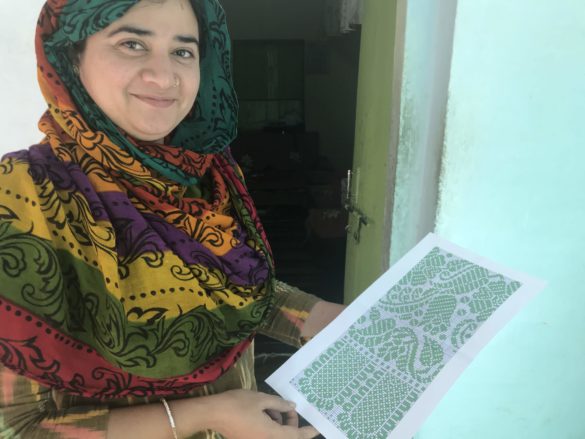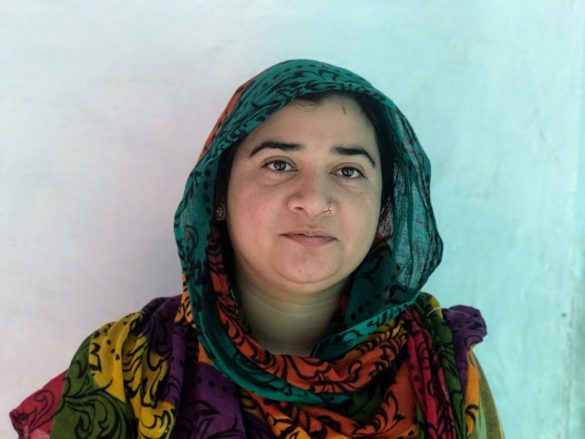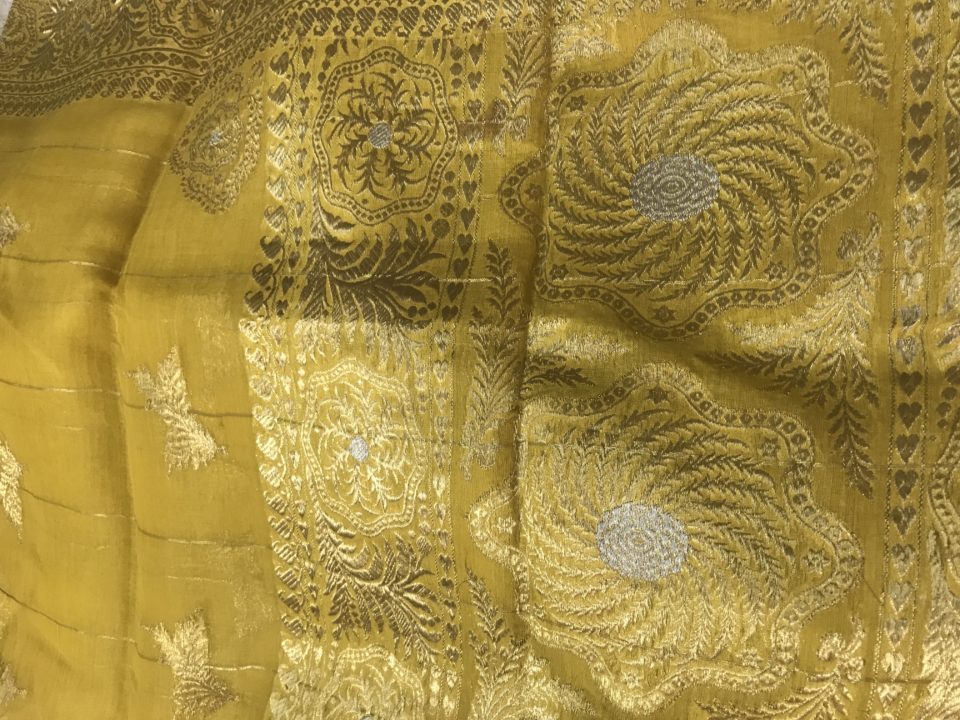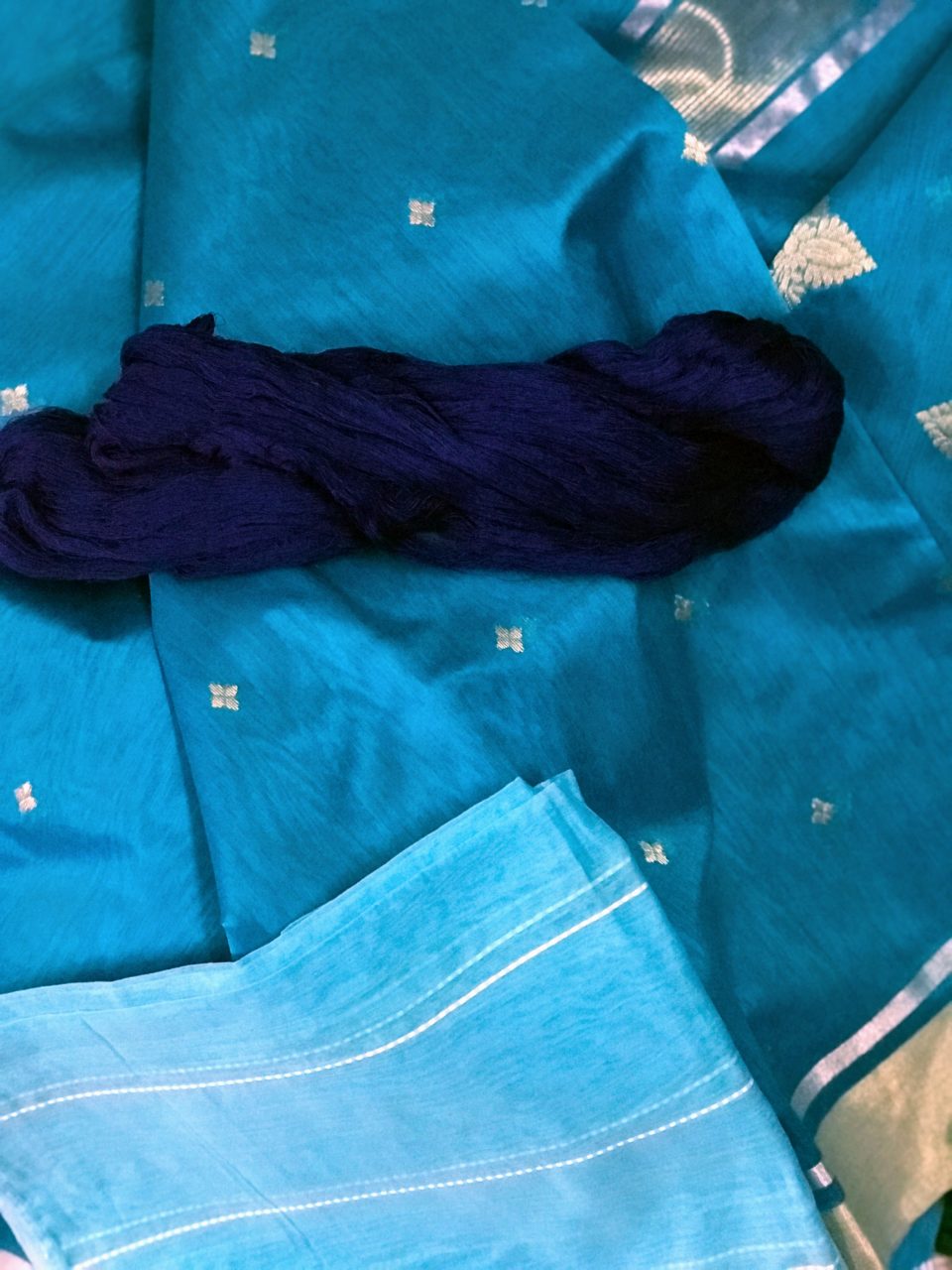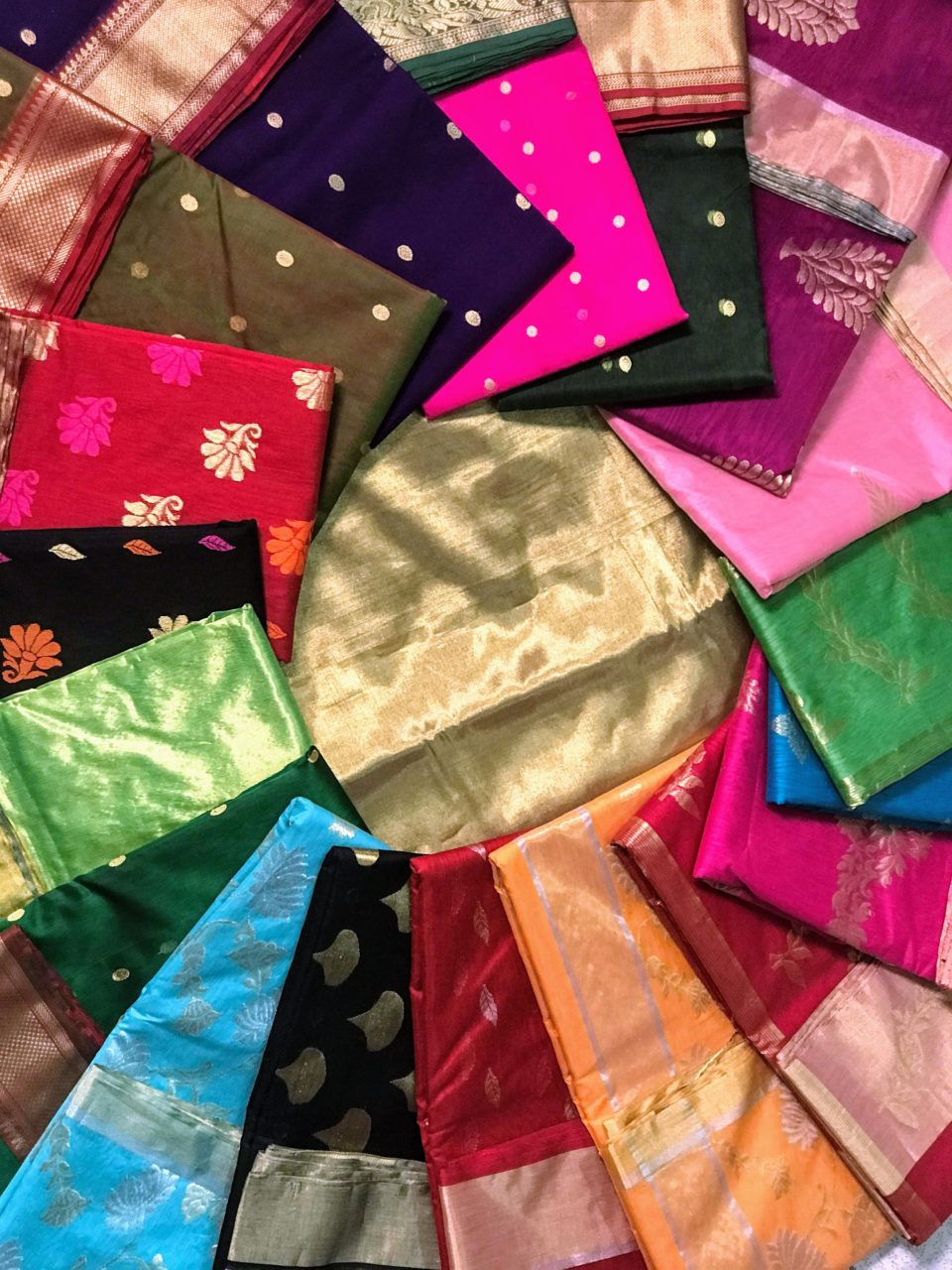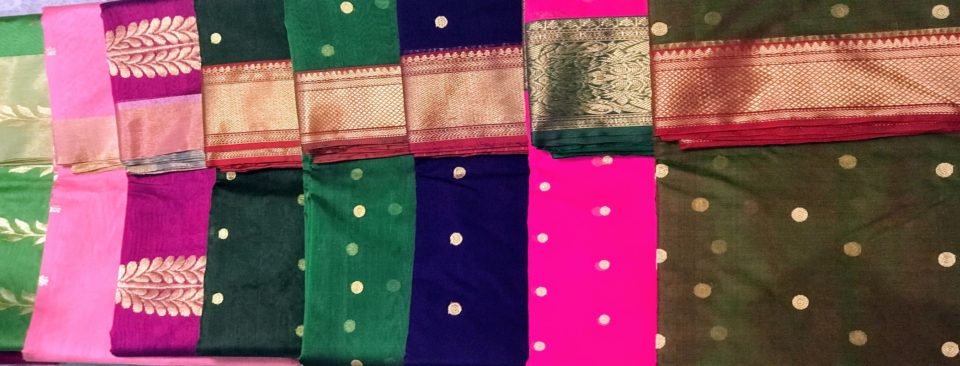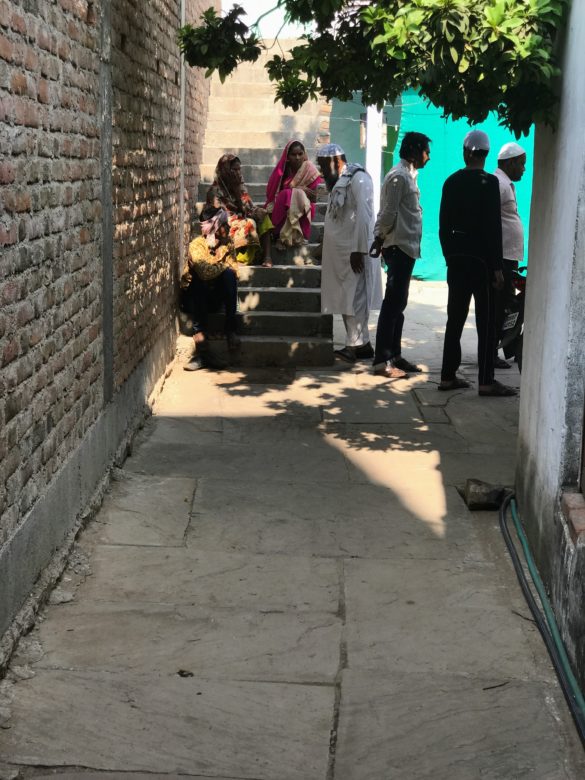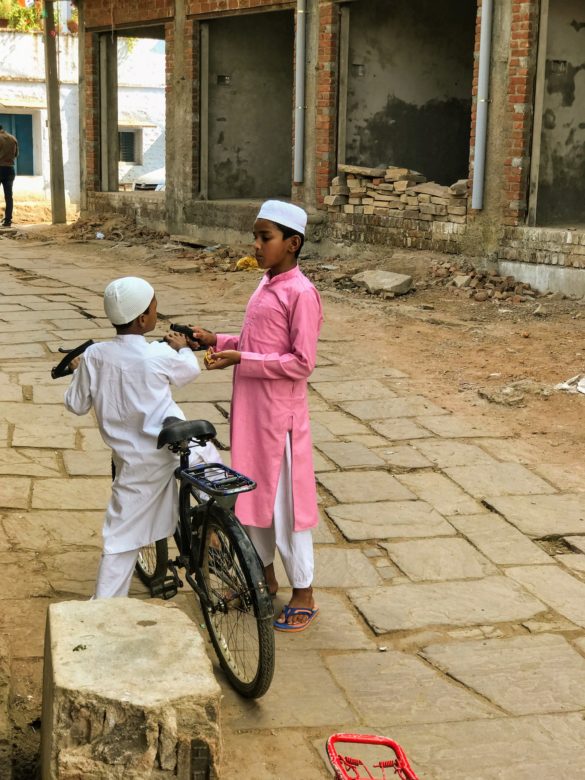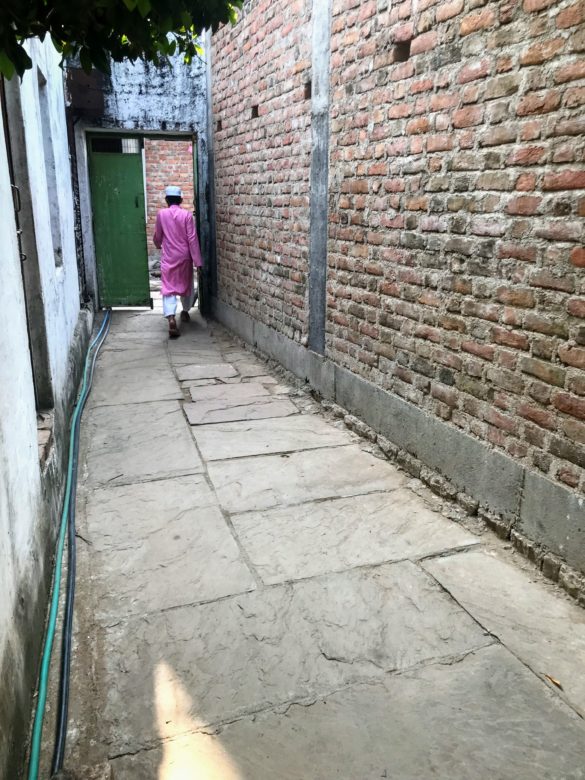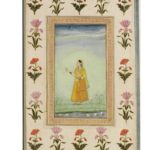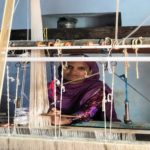The centre of his home is a courtyard. A guava tree and a sapota (chikoo) tree stand like sentinels on either side, perfuming the air. It is 11 a.m. by the time the film crew and I reach his house. His wife, Zamarrud, 34, gives us sliced guavas dusted with salt and chili powder as a welcome.
Ansari-ji as he is called is deeply knowledgeable about the weaving ecosystem. He is also a curious man, a born learner. Medium of build and height, he loves to learn about other fields and cultivates relationships. He was as interested in the filmmaking process, questioning us in reverse about camera angles and spotlight. The next morning too, he woke early to join us atop the fort to watch the filming.
We begin with the basics. Where does the yarn come from?
From Coimbatore in South India, comes the mercerized cotton. From China, the silk. It used to be Korea and before that, Japan, but now Chinese silk has taken over the world. The zari comes from Surat.
The yarn is first dipped in a solution of water mixed with acetic acid and soda. This softens the yarn and makes it ready to receive the dye.
Different looms require different counts of yarn. The more the thread count, the finer and more refined the saree, as in 100-count, 90-count and the less refined 80-count.
For Chanderi sarees, the warp is usually silk. The weft can be cotton, katan (what we call organza), or silk. If the weft is zari, it is called a “tissue” saree. “All the work on Chanderi sarees is done by hand,” says Ansari-ji. “No power loom.”
Real zari sarees cost Rs. 30,000 and above. Tested zari sarees can start at Rs. 2000.
Once the yarn is secured, it is usually dyed to preordained shades, depending on the saree that is being planned.
How many weavers exist in Chanderi, we ask. “Let us say that there are 6000 looms and there are 2 or 3 people per family using these looms. That would make it 18,000 weavers in Chanderi,” Ansari-ji replies.
Each has a style and a signature. Some weavers prefer bird motifs: peacock, duck, chidiya (sparrow), parrots. Others like banyan tree vines, shrubs and plants. Some work with animals: sheep, cows. “Even the peacock motif can be of hundreds of types,” laughs Ansari-ji. “Sitting, standing, flying, dancing.”
The more complex the motif, the more the labour and therefore price and payment for the weaver. The more complex the motif, the easier it is to rationalize weaving in a jacquard loom. The reason: it takes a certain amount of money to “set up” a jacquard loom and punch the holes for the motifs. It doesn’t make sense to undergo this expense for a simple saree with buttis that can be woven on a pit loom. This is the calculation that master weavers and designers need to make. So if you are buying a saree with complex “jaala” vines that spread all over, realize that it is done in a jacquard loom.
Ansari-ji has two sons, both of whom help him weave. He holds the whole operation together, spinning like a top, going to his looms to make sure the saree is of a good quality.
Come Friday afternoon and he takes a break to go to Namaz at the mosque. All the men: his father, brothers, sons, and nephews change their clothes and head to the mosque for prayer and communion.


